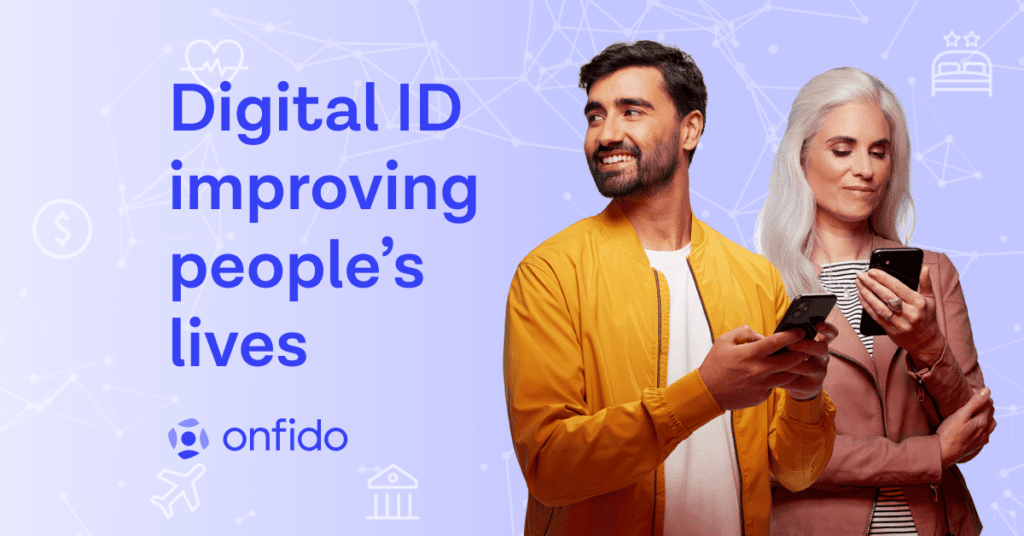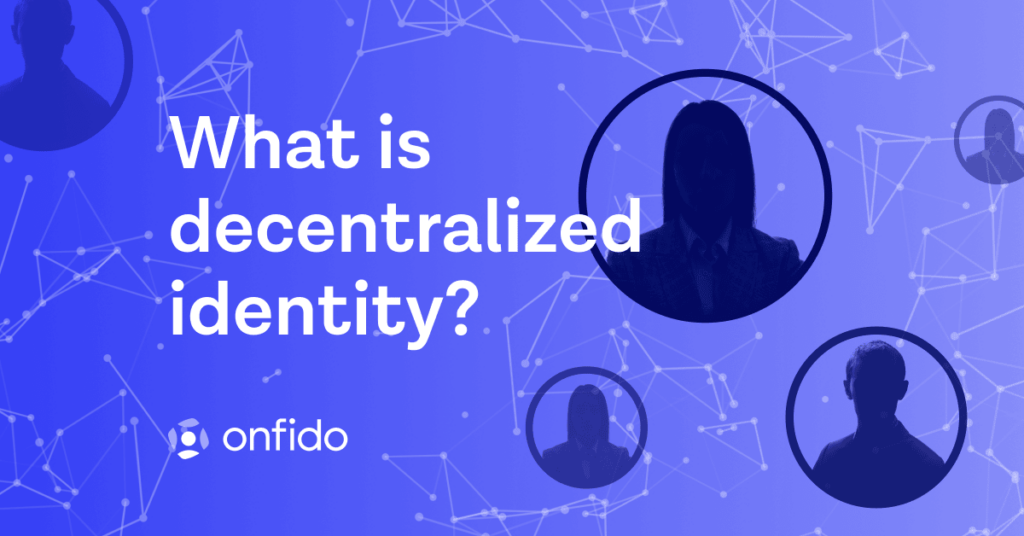
A version of this article originally appeared on the Forbes Technology Council site.
Technologies are created, and evolve, to solve problems for the humans who use them. A rapidly-developing example of this evolution emerged when the world moved to digital-first transactions at the start of the pandemic in 2020: digital identity verification. How could businesses remotely yet securely verify identities and protect themselves and their customers from fraud, while also maintaining good online experiences for their users?
Companies like Onfido have paved the way for fast and secure digital identity verification, and by now, many of us are used to taking a picture of our IDs and a selfie to prove who we are and access services online. But as this technology has become commonplace, with advanced AI and sleek UX, new challenges to solve have come to light around the cost, liability, and friction of repeating identity verification for every transaction. And once again, the technology has evolved into yet a new solution: shareable, reusable identity.
In August, Alaska Airlines debuted its reusable, user-controlled identity verification option for international travelers – highlighting travel as a natural use case where one verification provides a digital asset the user can use again and again in future transactions. By partnering with Airside, Alaska Airlines now allows its travelers to verify their passports while they’re still at home, so that they can skip the airport line for showing their passport to an agent or spending time at an automated kiosk, and pass right through the lobby to their international flight.
For the traveler, this saves time and steps – they load their passport once on the Airside app, and then can temporarily re-share it for future flights.
For the business, this reusable identity stored on the user’s device means freedom from data storage and the liability that comes with it, and decreased costs.
But the future of reusable identity is far-reaching beyond this travel use case, with the potential to transform our day-to-day interactions across many industries and services. Market analysts Liminal estimate the global TAM for reusable identity will reach $266.5B by 2027 – from $32.8B in 2022. The need and the market is clear: in Europe, the eIDAS framework is facilitating secure transactions between citizens’ IDs in their mobile wallets and European businesses and government services. For example, In Sweden, more than 99.2% of the population uses the BankID digital verification service – reaching 8.4 million users in 2022 who use it to open bank accounts and other online services from a network of more than 6,000 organizations who accept it. And in Estonia, all citizens have a state-issued digital identity, which has existed for more than 20 years and is used in all corners of everyday life.
In the US, the patchwork of activity by different states has been slower to reach any kind of unified digital identity framework or mobile wallet. This is where private companies like Airside, Apple and CLEAR have stepped in, and where we will see continued growth.
Digital identity has seen leaps in advancement in just the past few years, and the developments in biometrics, identity proofing, authentication, and advanced AI fraud detection have paved the way for reusable identity to reach mass adoption.
Reusable identity solving the problem of privacy
From travel, to opening bank accounts, to hotel and car rentals, we have to hand over our identity documents or information to access so many things. But people are rightfully having more concerns about how their data is being stored and used: identity fraud has gone up as much as 37% from 2022 to 2023. Fraudsters are becoming more sophisticated and savvy, with multiple ways to steal someone’s identity for their financial benefit – whether by buying stolen personal information from the Dark Web, impersonation scams and deepfakes, or using fake or stolen documents.
A reusable, sharable identity on the other hand is created and stored on a user’s own device. “Verify once, share anywhere:” that’s the promise of a future with reusable identities that can be shared across a vast global network of businesses, where a user can select where, how, and what parts of their identity information to share, and revoke access at any time. The number of people with a pre-verified reusable identity is growing, and with one click, those users can share their identity with a network of businesses who accept it.
The business benefits of reusable identity
Clearly, a reusable identity that a person can store and control is great for consumers. But it’s a great direction for your business, too. It’s a cheaper way to verify users, with no need to store their data, and already guaranteed to be verified, for 100% pass rates. We know that a smooth user experience is necessary for customer acquisition: our user research shows that 45% of customers will abandon the signup process if the user experience is poor. That’s why the reduced friction when resharing their ID to a new service provider is a benefit too. Consumers have already gone through the heavy lifting of a doc and face check and re-verification is as simple as taking a quick selfie.
Not to mention the complicated patchwork of compliance regulations from states to countries to regions, which can put companies storing user’s private data at risk of fines and other damage. Giving users control of their own digital identities in their hands frees businesses from the regulatory liability of storing private data, and removes the data honeypot that’s such an attractive target for fraudsters.
A vision for the future: fast, convenient, reusable and shareable identity verification
The direction that reusable identity is growing into is a vision of interoperability across platforms and use cases, while straddling the digital and physical worlds. Mass adoption means public-private partnerships, which are currently growing.
Much the same way we might pull out a driver’s license or national ID for many reasons in the course of a single week (presenting it both digitally and physically), that pre-verified reusable identity credential on our devices will be used with the same frequency. The difference is, when it’s a user-controlled sharable digital identity, it’s much more secure, private and convenient.
After verifying and storing it, your identity can open a bank account, then shared again to more easily apply for a mortgage. You can get your boarding pass for this afternoon’s flight while you’re still getting ready at home, and breeze through to your gate. Instead of standing in line for your rental car, you can share your reusable identity with one tap, and then again to check into your hotel room. For buying age-restricted goods, to setting up a new utilities account and more, a growing network of people will have a reusable identity stored on their devices, and businesses will want to join the network of places it can be shared and used.
How to get started with reusable identity:
The 2023 Gartner Market Guide for Identity Verification advises businesses to “prepare for a future built on portable digital identity.” Here are some points to think about for keeping your business competitive:
Look for fast, easy integration: Businesses need to speed up their sprint cycles. Look for reliable, cost-efficient IDV and sharing capabilities that are interoperable with existing legacy systems and the newest technologies.
Reduce costs and simplify operations: Lighten operational overhead with easy-to-share identity proofing. Users establish a verified identity once, then access more services with one click to share their reusable ID. Airside has shown that organizations can be 5x more efficient in their IDV processing, shortening/eliminating wait times, improving security, reducing administrative costs, and increasing the quality of IDV.
Drive network growth and scale quickly: Reusable IDs are not static; they can be used cross-vertically and become multidimensional with every use. Built with unique attributes and shared repeatedly for multiple services over time, their interconnections create network strength for businesses and their partners.
Take a deeper dive into identity fraud trends and recommendations for how to protect your business in our annual Identity Fraud Report.






